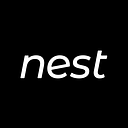Parasset: Value Reconstruction Based on Oracle
Background
On-chain assets include native assets (completely decentralized and capture value on the chain) and secured assets (undertake some kind of centralized risk and/or requiring certain kind of centralized entity’s guarantee, such as USDT). Based on the on-chain price from the oracle, the existing native assets can be used to form all other assets in parallel as long as they have a on-chain price, whether they are native or credit assets. The significance of using such native assets to issue parallel assets is that the underlying assets no longer take any credit risk.
Concepts
Mort Asset: Assets which are generally decentralized and native, were create on the chain, can be used to generate parallel assets, such as ETH, NEST, NHBTC.
Underlying Asset: Underlying parallel assets, such as ETH, USDT, HBTC, etc.
Parallel Asset: Assets generated by collateral through protocol, anchored the underlying assets, with an intrinsic value of 1:1, such as pUSD, pETH, pBTC.
The following uses pUSD as an example to illustrate the remaining concepts:
Mortgage rate: At the beginning of mintage, users need to deposit collateral assets to generate the parallel one, such as pUSD, where the ratio of pUSD generated from per collateral asset to the collateral asset price is less than 1.
Liquidation Price: When the price of the collateral asset drops, there is a liquidation line above the collateral rate. The liquidation pirce and the collateral rate conform to a certain relationship. The liquidation price is generally 10%-20% higher than the collateral rate.
Debt Position: After the minting user deposits the collateral assets to the contract, a debt position for custody of the collateral assets is created. When the user redeems the collateral assets from the debt position, the debt deposition ends, and the collateral assets added or re-pledged in the middle share the same debt position.
Insurance Fund Pool: The insurance fund pool is used to ensure that the exchange relationship between pUSD and USDT is always maintained at a ratio of 1:1 when liquidating and the insurance pool needs to be credited with USDT. Anyone can send a USDT to the insurance pool at any time to generate a PUSD and send a PUSD back to the pool for a USDT provided that the insurance pool has USDT.
Oracle: Provides on-chain prices for mortgaged assets, namely NEST.
Stability fee: Based on the mortgage rate, each debt position has to pay the stability fee according to the difference between the liquidation line and the current price and the time period when adding collateral, minting new coins, redeeming and liquidating.
Minter: The user who send mortgaged assets for minting.
Insurer: LP of insurance fund.
Operation flow
1. Minting
The minter deposits the required collateral assets to the contract, and generates stable coins such as pUSD or pETH according to the collateral rate of their choice. At the same time, the system will generate the corresponding debt position and liquidation line.
2. Redeem
Before the debt position is liquidated, the minter can return the corresponding amount of stable coins at any time to withdraw the collateral asset.
3. Liquidation
Once the price of the mortgaged asset is below the liquidation line, anyone could trigger the liquidation. The liquidation follows these rules:
Anyone could liquidate the parallel assets of (Xt* 0.9)for the mortgaged asset of Xt. The liquidated 0.9Xt asset will enter the insurance fund and the parallel assets of Bt-1 will be destroyed.
4. Supplement collateralt
At anytime, users can supplement the collateral, which will enter the same debt position, and modify the liquidation line at the same time. See Algorithm 1 for the rule.
5. Deposit to Insurance Fund
Anyone can deposit insurance funds to the insurance pool, requiring that it be the corresponding underlying asset. Shares are calculated on a net basis after injection.
6. Insurance Withdraw
The insurance funds can be redeem at a designated redeem day. Redemption happends once every 3 months. Each share needs to be held for at least 3 months, and redeem according to the net asset value: priority redemption of underlying assets, and redemption of parallel assets if insufficient.
7. Re-minting
Users could re-mint coins in the original debt position and correct the liquidation line at the same time, correct according to Algorithm 1.
8. Quick minting and redemption
Users could deposit 1 USDT into the insurance pool for 1 PUSD or inject 1 PUSD in exchange for 1 USDT (if available). Users will pay charges of 2‰ based on the size of the pool which is measured by assets.
9. Stability Fee
The stability fee is calculated by block. The stability fee is charged for each operation of minting, redeeming, replenishment and liquidation. Stabilization fee are calculated using parallel assets as shown in Core Algorithm II.
10. Insurance NAV
The net insurance fund asset value is calculated according to Core Algorithm IV.
